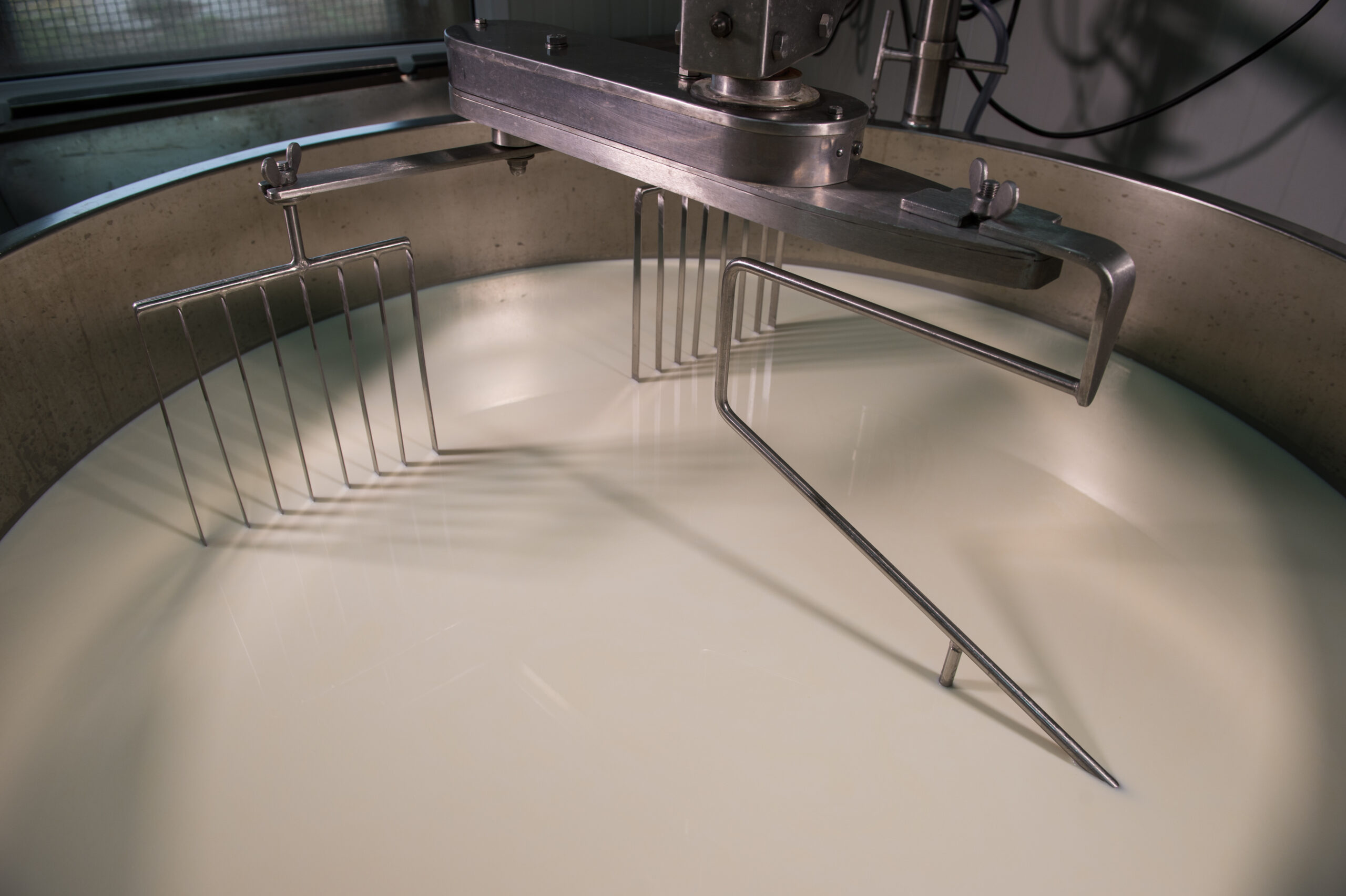
Cheesemaking is both an art and a science, rooted in centuries of tradition and craftsmanship.
For those who appreciate the finer things in life, understanding the essential steps of cheesemaking highlights the extraordinary journey from milk to the final, delectable bite.
1. The Milk
Great cheese begins with great milk. The quality of the milk is paramount, and cheesemakers carefully select their sources. For cheeses like Barber’s Cave Aged Cheddar, the cows graze on lush pastures, producing rich, creamy milk. In Normandy, the Normande cows supply milk for Gillot Camembert, whose distinct creamy texture reflects the region’s rich pastures and careful farming.
2. Cultures and Rennet
The next step is the addition of starter cultures, which acidify the milk and begin fermentation. These cultures are vital to developing the flavour and texture of the cheese. Rennet, a natural enzyme, is then added to coagulate the milk into curds and whey.
3. Cutting and Cooking the Curds
The curds are cut into small pieces, allowing whey to escape. For firmer cheeses like cheddar, the curds are cut smaller. Softer cheeses, like Blue D’Affinois, have larger curds for a creamier texture. The curds may be gently heated to further develop the desired consistency.
4. Shaping and Pressing
The curds are placed into moulds to take shape. For cheeses like Vacherin Mont-d’Or AOP, the cheese is wrapped in fragrant spruce bark. Pressing is also crucial for cheeses like cheddar, which require a firmer, denser texture.
5. Salting
Salt is added to enhance flavour and preserve the cheese. It’s applied through dry salting or by submerging the cheese in a brine bath. The amount of salt and its method of application can significantly influence the final taste.
6. Aging
Aging is where cheese truly transforms. During maturation, the cheese develops its flavour and texture. The aging process can vary greatly, from the months-long maturation of Colston Bassett Stilton PDO to the shorter aging of Vacherin Mont-d’Or AOP, which imparts a creamy texture and delicate resinous notes from its spruce wrapping.
7. Wrapping and Storing
Once matured, the cheese is carefully wrapped to preserve its freshness and flavour. Many cheeses are wrapped in materials like wax paper or natural bark. Vacherin Mont-d’Or is placed in a wooden box to maintain shape and add to its rustic appeal.
After months of careful craftsmanship, the cheese is ready to be enjoyed. From the tangy complexity of Barber’s Cave Aged Cheddar to the subtle nuttiness of Ossau Iraty, each cheese tells a story of tradition, passion, and expertise. Understanding the cheesemaking process allows us to appreciate the artistry behind each bite.









